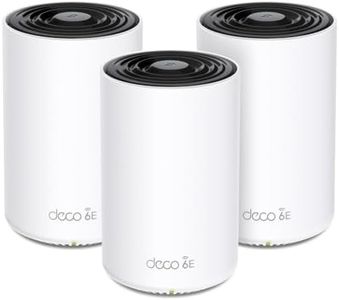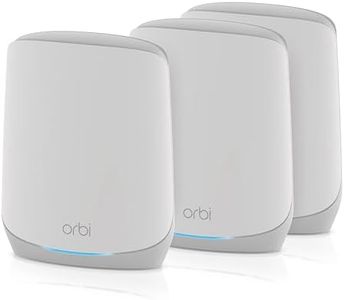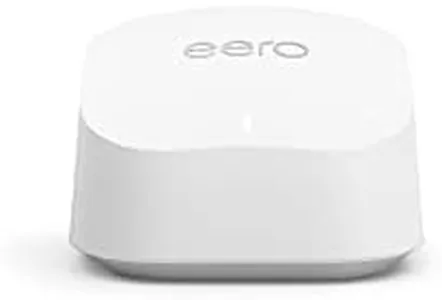We Use CookiesWe use cookies to enhance the security, performance,
functionality and for analytical and promotional activities. By continuing to browse this site you
are agreeing to our privacy policy
10 Best Wi Fi Systems
From leading brands and best sellers available on the web.Buying Guide for the Best Wi Fi Systems
Choosing a Wi-Fi system is all about ensuring your home or office has strong, reliable internet coverage in all the places you need it. Wi-Fi systems, sometimes called mesh networks, are designed to eliminate dead zones by spreading multiple access points throughout your space. The key to picking the best Wi-Fi system is to match how large and complex your space is with your internet needs—that means thinking about where you struggle with weak signal, how many devices you have, and the sort of activities (like streaming or gaming) you use the internet for.Coverage AreaCoverage area tells you how much physical space your Wi-Fi system is designed to handle, usually measured in square feet or meters. This is important because the larger your home or office, the more reach you’ll need. If you live in a small apartment, a basic system will likely suffice, but a big multi-story house will need a stronger or more expansive system. To choose wisely, think about whether your signal needs to reach basements, garages, or outdoor spaces. It's generally better to overestimate slightly than to get less coverage than you need.
Number of Nodes/UnitsWi-Fi systems use multiple units, known as nodes or access points, to spread the signal further. More nodes mean broader coverage and fewer weak spots. For small areas, a single unit may be enough, but for larger or oddly shaped spaces, you’ll benefit from a system with two or more units. Consider your home's layout: homes with lots of walls or multiple floors often require more nodes to ensure strong connectivity everywhere.
Wi-Fi Standard (e.g., Wi-Fi 5, Wi-Fi 6)The Wi-Fi standard refers to the generation of wireless technology the system uses. Newer standards like Wi-Fi 6 offer faster speeds, better handling of many devices, and improved efficiency compared to older standards like Wi-Fi 5. If you have many smart devices or do a lot of streaming or gaming, opting for a newer standard ensures smoother performance. For general browsing in a smaller household, an older standard could still do the job just fine.
Maximum SpeedMaximum speed tells you the top data transfer rate the Wi-Fi system supports, usually shown in Mbps or Gbps. While higher numbers sound better, remember the actual speed depends on your internet plan and how many devices are connected. If your internet activities require lots of bandwidth—like streaming in 4K, online gaming, or video conferencing—look for a system with higher speed ratings. For casual browsing and social media, the speed requirement is much lower.
Ease of Setup and ManagementThis describes how simple it is to install and manage your Wi-Fi system, often through an app. Some systems are designed for quick, app-guided setup and have user-friendly dashboards, while others require more hands-on configuration. If you're not tech-savvy, prioritize systems known for their easy installation and simple control—this saves time and reduces frustration, especially if you need to adjust any settings or troubleshoot.
Device and Band SupportDevice and band support means how many devices can connect at once and whether the system supports single or multiple frequency bands, typically 2.4 GHz and 5 GHz, sometimes including 6 GHz. Multi-band systems can balance traffic more efficiently, reducing slowdowns when lots of devices are connected. If your household is full of tablets, phones, and smart gadgets, a tri-band system is a wise choice. For smaller setups with fewer devices, dual-band coverage can be sufficient.
Parental Controls and Security FeaturesThese are the built-in features designed to keep your network safe and give parents control over what kids can access online. Parental controls can let you pause Wi-Fi on certain devices or block specific types of content, while security features guard against hackers. For families or anyone concerned about online safety, a system with strong, easy-to-use parental and security tools is very important. Users who don’t share their network or lack young users might prioritize other features.















